

Our annual report this year is presented as a State of Wildlife Health report that has two goals. First, it brings attention to some important wildlife health issues seen through the vantage point of our regional centres and network. While not a complete report on the status of health of all of Canada’s wildlife, nor a complete inventory of all our activities, this report aims to raise awareness among Canadians about some important aspects of their wildlife’s health and encourage dialogue across the many disciplines involved in promoting, protecting and managing wildlife health. Second, it reports on the state of the CWHC programs to promote accountability and transparency in our operations.
We are in a constant struggle to protect wildlife from the myriad of threats they face ranging from pollution, to climate change, to infectious diseases. We are equally challenged to protect the social values wildlife bring us and to be prepared for new and emerging infectious threats that harm our health, agriculture, and food safety. These challenges are too many and too frequent. In an era of static and declining resources, the CWHC must make strategic decisions on how best to deploy our resources and expertise to make us more effective agents of change. Finding the species, situations and locations where our surveillance, research and action can most effectively influence health outcomes is at the heart of our evolution from a surveillance organization to a wildlife health intelligence network.
The CWHC has made great progress over the past quarter century, but challenges remain, and work is ongoing. To meet these challenges, the CWHC needs more than ever to be an innovation incubator that develops new information and services that can be rolled out and applied by our partner agencies. From developing new models of governance, to cutting-edge diagnostic tests, to critical insights into how wildlife health works, our staff, faculty and trainees are innovation leaders. We are extremely grateful for the ongoing support of our host institutions. This win-win relationship brings the CWHC the experts and capacity to address pressing wildlife health questions while returning to our hosts investment in research, profile as leaders in socially important issues, and unparalleled training opportunities.
We will continue to focus on our core roles of being leaders, innovators, connecters and engagers to support and advocate for the wildlife health community in Canada and abroad. With the anticipated endorsement of a National Approach to Wildlife Health in Canada by federal, provincial and territories Ministers responsible for biodiversity, we envision a new era of wildlife health where a growing community of practice can more effectively work together to keep wildlife healthy. We hope our CWHC State of Wildlife Health serves as a catalyst for more new ideas and new actions.
Chief Executive Officer, CWHC
Chief Operations Officer, CWHC
Trauma is perhaps the most important, underappreciated, under studied cause of wildlife injury and death. For too long, the spectre of emerging infections has preoccupied most of the research and surveillance interest in wildlife. But, alot of wildlife die from trauma. The impact of pet and feral cats on songbirds is unparalleled, with estimates of two hundred and fifty million birds being killed per year in Canada. In North America, a vehicle collision with a large wild animal happens every minute of every hour. Gunshot wounds, impacts with windows, trauma from turbines and more add to this toll. As seen in the case of endangered right whales featured in this report, trauma can be a tipping point leading a species towards extinction. With the growth of alternative energy sources, we can anticipate growing causes of trauma from wind and wave turbines. Urbanization will compound the numbers of traumatic deaths. Wildlife trauma has implications for us as well. Whether the economic effects of shifting shipping lanes and fishing grounds to protect right whales or the hospitalizations from vehicle collisions with wildlife, the impacts on society and individuals can be severe and sometimes fatal.
Unlike for infectious diseases, we can easily see the causes of trauma and take steps to reduce the harms they create. Keeping cats indoors could have massive immediate benefits for songbirds and rodents. Taking steps to properly place bird feeders or create visual barriers can reduce the number of birds that die after flying into windows. Engineering solutions like fish friendly dams, wildlife overpasses and physical barriers on roads and tracks are being used. Strategic placement of alternative energy infrastructure can avoid important wildlife areas. We face many obstacles to preventing and responding to infections and pollution in wildlife. With so many viable options to reduce the impacts of trauma, it may be time to make outreach and action to modify how we interact with the wildlife world to reduce traumatic impacts on conservation, economies, and health a priority for wildlife health programs.
Between the spring and fall of 2017 North Atlantic right whales experienced a mass mortality event caused by collisions with vessels and entanglements in fishing gear, resulting in the deaths of 16 whales during this time. In a single night in May 2017, approximately 400 migratory birds died after colliding with a building in Galveston, Texas. While these tragic events highlight the importance of trauma as a cause of wildlife mortality, wildlife mortality resulting from trauma is relatively overlooked.
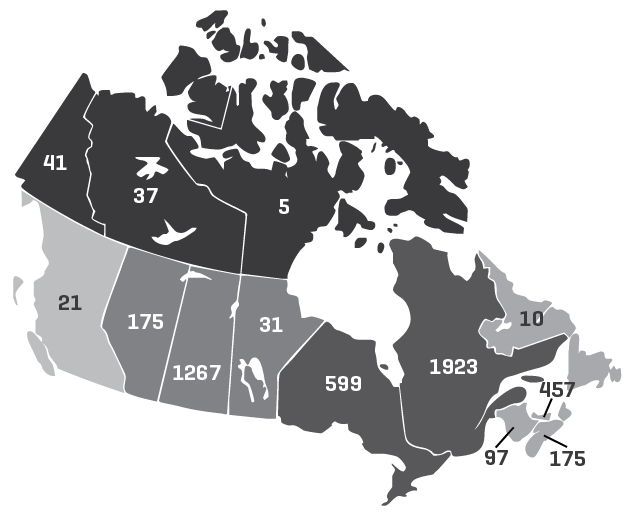
Fig 1: Number of trauma incidents, by province, submitted to the CWHC over a 5-year period (2013-2017)
Trauma is responsible for an enormous number of wildlife injuries and mortalities annually. Estimates suggest the number bird-window collisions in Canada could be as high as 25 million per year, and an additional 14 million birds are killed through vehicle collisions per year. In the year 2000 alone there were thousands of collisions between mammals and vehicles. Additionally, while road mortalities involving reptiles and amphibians are generally under reported it has been suggested that in some cases these species could comprise more than 94% of such incidents.
In preparation for this year’s State of Wildlife Health Report we conducted a database search of trauma incidents over the five-year period from 2013 through 2017. The results of this search produced 4892 incidents involving 3043 (62.2%) birds, 1743 (35.6%) mammals, and 106 (2.2%) other species (Fig.2). Collisions with vehicles represent the majority of trauma incidents with a total of 1507 (30.8%), while collisions with structures comprised an additional 742 (15.2%) incidents; combined these two forms of collision were responsible for 2249 (36%) trauma incidents. Human inflicted trauma (excluding vehicular collisions) were found to be responsible for approximately 540 (11%) incidents; misadventure was responsible for approximately 139 (2.8%) incidents; predation was the cause of approximately 447 (9.1%) incidents; and 1517 (31%) incidents resulted from some trauma that could not be specified.
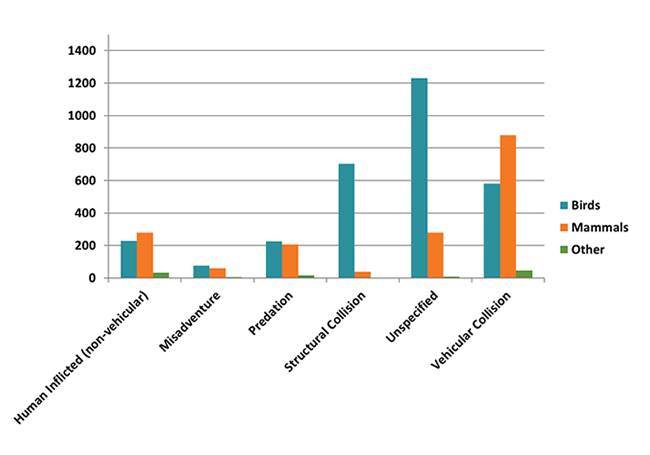
Fig 2: Number of incidents in each category of trauma reported for each of the animal categories.
Reports and submissions from the public are vital to the success of the CWHC’s wildlife health surveillance. If you observe any incidents of sick, dead, or injured wildlife please report them to your nearest Canadian Wildlife Health Cooperative regional centre.
For some additional information on trauma you can check out our infographics on Reducing Bird-Window Collisions; Reducing Wildlife-Vehicle Collisions; and the collaboratively produced Incident Report on The North Atlantic Right Whale Mortality Event. Additionally, if you are in PEI or NL and you can report bat trauma through our Toll-Free Bat Number.
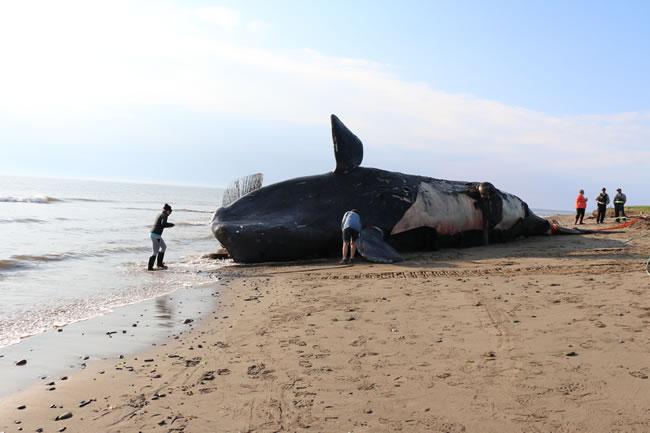 The North Atlantic right whale (NARW), Eubalaena glacialis, is an endangered species of large baleen whale (up to 90 tonnes and 18 m long) whose primary habitat is the east coast of Canada and the United States. This iconic species has struggled for survival over the years, with dwindling population numbers and poor reproductive success caused both by debilitating entanglements in fishing gear and lethal ship strikes. The global NARW population was estimated at 450 individuals in 2018, however only an approximate 105 of those are female. With a complete absence of any new calves born this breeding season, some scientists are predicting the species extinction within the next 25 years unless serious measures are taken. Part of those measures,in which the CWHC has taken a lead role, involves performing necropsies on NARW to investigate and detect ongoing or emerging threats affecting this critically endangered species.
The North Atlantic right whale (NARW), Eubalaena glacialis, is an endangered species of large baleen whale (up to 90 tonnes and 18 m long) whose primary habitat is the east coast of Canada and the United States. This iconic species has struggled for survival over the years, with dwindling population numbers and poor reproductive success caused both by debilitating entanglements in fishing gear and lethal ship strikes. The global NARW population was estimated at 450 individuals in 2018, however only an approximate 105 of those are female. With a complete absence of any new calves born this breeding season, some scientists are predicting the species extinction within the next 25 years unless serious measures are taken. Part of those measures,in which the CWHC has taken a lead role, involves performing necropsies on NARW to investigate and detect ongoing or emerging threats affecting this critically endangered species.
In the summer and fall of 2017, the CWHC investigated an unprecedented mortality event in NARW in the Gulf of St. Lawrence where 12 carcasses were identified floating or beached, and 5 live whales were observed entangled in fishing gear between the months of June to September. Seven carcasses (except one which beached itself naturally on the on the Magdalen Islands [Îles-de-la-Madeleine])) were towed ashore by the Department of Fisheries and Oceans (DFO) for complete necropsies conducted by a team of staff and volunteers (from DFO and the Marine Animal Response Society [MARS]) led by CWHC veterinarians from the Atlantic and Québec nodes. As well, internationally recognized whale experts William McLellan and Dr. Stephen Raverty (CWHC BC) attended the first three NARW necropsies.
Scanning and targeted surveillance remain the foundation of the CWHC’s ability to provide a reliable perspective for the State of Wildlife Health. Long term data collection allows us to see when trends in endemic disease signal important changes. Opportunistic samples remain critical for finding new and unusual events.
West Nile
This summer saw a relatively high level of activity of WNV in wildlife in Quebec and Ontario. With a few exceptions, cases were diagnosed in birds of prey in Quebec. Crows were most frequently positive in Ontario but 22% of cases were birds of prey. A fatal case was diagnosed in an Eastern gray squirrel in southern Quebec while cases were seen in a Double-crested Cormorant, a Trumpeter Swan, and a Wild Turkey in Ontario. An even larger diversity of birds has been found affected by this virus across all of our regional centres. This suggests that the array of wildlife to track must be extended beyond corvids if a complete picture of the diseases’ ecology is desired. Over the years we have seen a strong correlation between the numbers of cases of WNV in wildlife and cases in people. Often the first cases in wildlife in a region precede the first human cases by a few weeks.
Chronic Wasting Disease in Saskatchewan
This disease continues to be a major conservation concern. New data on the susceptibility of non-human primates increased public health concerns in 2017. Although submissions from hunters for testing was up this year, targeted sample sizes are still a challenge to achieve, limiting our ability to track this spreading disease. Of the 823 ungulates tested from Saskatchewan, 13.5% were positive for CWD. Mule deer and white-tailed deer provided most of the positive samples with smaller numbers of positive moose and elk.
Rabies
www.cwhc-rcsf.ca/quarterly_report.php
Rabies responses are informed by rabies diagnostic services provided by the CWHC and targeted surveillance and research that helps rule out rabies in locations where wildlife are affected by clinically similar diseases, such as distemper. In 2017, the CWHC examined 1860 animals for rabies of which preliminary pathological examinations indicated the need for rabies testing in 1485 animals. Many of 1485 tested were from Quebec, where the CWHC, Canadian Food Inspection Agency (CFIA) and the government of Quebec work together on a surveillance program designed to detect and monitor the spread of the raccoon rabies virus variant in the province. Several rabid raccoons and striped skunks have been detected because of this program. Results of this surveillance program helped to target areas for control measures such as rabies host density reductions and vaccination programs involving wild raccoons. In addition to the targeted surveillance in Quebec, the CWHC tested nearly 500 animals for rabies; 13 tested positive. All of the positive animals were bats: 3 from New Brunswick, 3 from Quebec, 1 from Ontario, 5 from Saskatchewan and 1 from Alberta. All the positives were big brown bats except the case from Alberta, which was a silver-haired bat. The CWHC is actively working with provincial and federal partners, notably Public Health Agency of Canada (PHAC) and CFIA to better integrate and share rabies surveillance information in Canada. The CWHC Wildlife Health Information Platform (WHIP) will be play a crucial role in this project.
 When people started noticing songbirds sick and dead at their feeders, they wanted to know why and how they can stop it. The CWHC spearheaded a multi-province response to an outbreak of trichomonosis in 2017 that extended through every province from Ontario east to Newfoundland and Labrador.
When people started noticing songbirds sick and dead at their feeders, they wanted to know why and how they can stop it. The CWHC spearheaded a multi-province response to an outbreak of trichomonosis in 2017 that extended through every province from Ontario east to Newfoundland and Labrador.
Trichomonosis (also known as trichomoniasis, canker, or frounce) is an infectious disease among many species of birds caused by the microscopic parasite Trichomonas gallinae. Since 2005, increased numbers of finches in the United Kingdom were found dead due to this disease. Trichomonosis was first documented in wild birds in Atlantic Canada in 2007. The reason for the emergence of this disease in finches is uncertain, although there is growing evidence that backyard bird feeding and watering might be involved.
In early July, CWHC-Atlantic began to accumulate reports from the public of sick and dead finches showing signs of trichomonosis. CWHC confirmation of this disease and documentation of its spread gained extraordinary interest from the public and the media. Subsequently, more reports of potential incidents reported by the public from across Atlantic Canada and into Quebec and Ontario rapidly accumulated and were tracked by the CWHC.
The CWHC was able to swiftly produce outreach material for our government partners to help manage the public concerns and to better assess the possible impacts of this outbreak. Fact sheets and recommendations for backyard bird feeders were quickly made available to the public using our social media. This helped citizens be part of the surveillance system as well as part of the solution.
As the popularity of supplemental bird feeding increases, so too have the extent and frequency of infectious diseases that may result from increased contact between birds at feeders and contamination of the feed or feeders with infectious organisms. Like mammalian wildlife species, there is mounting evidence recreational supplemental feeding should be discouraged. The CWHC produced additional outreach material to help government and the public select more bird friendly ways to attract and help songbirds as well as instructions on hygiene for feeders and waters for those who must continue to feed birds.
The collaborative effort of our three eastern regional centres allowed the CWHC to effectively track this outbreak, share insights into the sources and possible origins, and rapidly share information to help people respond to this disease. It is an example of the value of a distributed network approach to rapidly respond to emerging threats.
Two white-tailed deer from London, Ontario were confirmed this year as the first cases of Epizootic Hemorrhagic Disease (EHD) in the province. Historically this is more typically a disease seen in the United Staets with occasional cases detected in southern British Columbia, Alberta, or Saskatchewan. In recent years, outbreaks seem to be occurring more frequently and further north than usual. Rapid response and quick communications by the CWHC helped to educate the public about this disease, and garner their support in reporting suspicious cases.
Surveillance and research in Vancouver found frequent and close contact with rates was common in the poorest neighbours and that injection drug use and outdoor activities increased the risk. Urban rats were found to carry a variety of zoonotic pathogens, including some with significant antimicrobial resistance (e.g. MRSA) that can be shared with people. This work identified risk factors that may be targets for education and action to reduce pathogen sharing between people and rats.
CWHC scanning surveillance continues to produce early warning. We found the 1st case of the nematode Philometra rubra in striped bass. This has implications for re-introduction of an extirpated species. Other examples include the 1st case of lymphoproliferative viral disease in wild turkeys in Quebec and Epizootic Hemorrhagic Disease in deer in Ontario, urban tularemia in wildlife in Saskatoon, and the 1st detection of disease carrying ticks in more northern locations.
Combating this public health emergency requires knowledge of how drug resistance moves through the environment. Detections of methicillin-resistant Staphylococcus aureus and Clostridium difficile in urban and peri-urban rodents exposed possible new routes for resistance to flow between people and animals.
An advantage of being part of a network capable of working with numerous partners and species is the ability to see larger patterns. For example, CWHC diagnostics were key to diagnosing the first well-documented case of multispecies mass mortality of marine fish, birds and mammals linked to a Paralytic shellfish toxin-producing algal bloom.
Sometimes, disease investigations help alleviate fears. For example, careful investigation of lesions in lake whitefish helped alleviate community concerns about mercury toxicity and zoonotic tapeworms in food fisheries. Hunter food decisions were supported by testing their harvested deer for chronic wasting disease prior to their consumption.
Innovations at the CWHC are leading to better animal welfare, better surveillance, new options for action and innovative ideas on governance and problem management. A full listing of our publications and presentations can be found here.
Applied research projects discover novel ways to prevent and control wildlife diseases. For example: Ecological studies and models at our Western/Northern Centre is inspiring management experiments to reduce deer exposure to CWD prions. Combining field epidemiology, diagnostic pathology and laboratory studies helped our Atlantic Centre to confirm simple steps people can take to reduce the risk of bird-feeder associated diseases. Epidemiological studies of urban rats at our Pacific Centre have suggested the need to re-evaluate if traditional pest control methods 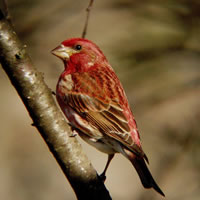 increase the risk for certain zoonoses. Our Pacific Centre is also collaborating with university and government partners to explore new ways to treat free ranging bighorn sheep for Psoroptic mange.
increase the risk for certain zoonoses. Our Pacific Centre is also collaborating with university and government partners to explore new ways to treat free ranging bighorn sheep for Psoroptic mange.
Health and welfare are allied concepts. The CWHC contributes to advances that minimize harm to wildlife when they are studied or managed. For example, our Quebec Centre supports researchers and governments to reduce deaths or harms associated with capture and anaesthesia of animals such as surf scoters and seals. Our National and Atlantic Centres collaborate in public outreach to educate about the value of bats to society as well as work with researchers to seek best practices in bat handling.
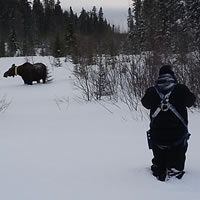

7 Book chapters
83 Peer-reviewed articles
1 Magazine article
15 Strategic reports

63 platform presentations
9 posters
30 invited lectures

on ~ 200 different species
2121 Facebook, 647 Twitter, 172 Instagram
95 Blog posts liked 2372 times on Facebook

Finding news ways to detect threats and trends improves awareness and preparedness. For example: CWHC Associate Dr. Colin Robertson, at Wilfred-Laurier University, assessed the limits and opportunities for spatial analysis of wildlife surveillance data. Our National Office updated our national disease database to a health intelligence platform that can accommodate a wider array of surveillance clues and more rapid analysis to improve our awareness and speed actions. Our Alberta and Atlantic Regional Centres developed and assessed tools for citizen science and traditional ecological knowledge for surveillance in areas remote from our usual catchment area for surveillance. Our Ontario/Nunavut Centre developed and deployed a web-based reporting tool for hunters and others to report unusual wildlife health observations using their cell phones. Our Alberta Centre played a key role in developing non-invasive tests to measure stress in muskox using hair samples.

In a rapidly changing world, wildlife health programs need new ideas to improve their speed, effectiveness, and efficiency. Examples: Our National office is expanding the concept of harm reduction from the public health response to addictions to complex wildlife health issues. Our National Office is also advocating for a new view of the role of wildlife in promoting human community preparedness for climate change. In our role as a co-lead of an OIE Collaborating Centre, the CWHC is also working with other programs around the world to define core competencies and capacities for national wildlife health systems.
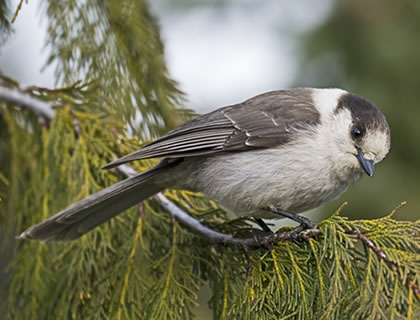
The CWHC continued to support federal partners to secure the endorsement of a National Approach to Wildlife health in Canada. Detailed plans to identify priorities and secure resources will be a focus of the approach in 2018-19. After Canada’s OIE assessment of the performance of Canada’s veterinary services, it has become clear that the CWHC is critical animal health infrastructure for the nation and therefore a critical partner in implementing the national approach.

The Wildlife Health Situation and Response Analysis tool was developed for Environment and Climate Change Canada. The Risk Assessment and Management Guide for Pacific Region’s Aquaculture Management Division was developed for Fisheries and Oceans Canada. Both aimed to develop a repeatable approach to operational risk assessments to enable decisions in the face of uncertainty.

A new tool to assemble and assess diverse sets of animal and environmental data for avian influenza early warning was developed and tested this year. A better understanding of options, expectations and abilities to see patterns resulted along with ideas to refine our wildlife health intelligence platform.
Expectations to describe and measure program outcomes are increasing. As issues of accountably and scarcity of resources expand, the need to convey value to partners and justify publicly funded programs becomes increasingly important. Equally important is the ability of the CWHC to adapt, anticipate and respond to growing and changing societal needs, be innovative and maintain effectiveness.
To meet these changing expectations, we have launched a new program to track the “health” of the programs we deliver. The CWHC has begun systematically tracking metrics, selected to reflect how well we are meeting our partner’s needs, by providing situational awareness, supporting decisions and sustaining a national approach The ability to be reliably and repeatedly measure outcomes and relate them to organizational priorities and goals influenced this initial set of metrics (table 1)
| Theme | Attribute | Monitoring Targets | |
|---|---|---|---|
| Situational Awareness | Samples examined reflect Canada’s geographic, ecological and species diversity | Tracking changing patterns of sample submission | |
| Surveillance results are available in a timely fashion | Assessing the timeliness of report generation, information input and results sharing | ||
| Information is shared with those who need to know quickly and accurately | Frequency and reach of technical reporting, alerts and social media reports | ||
| Decision Support | Access to and incorporation of contextual information to turn surveillance information into knowledge | Capacity to access and use contextual information to supplement surveillance outputs | |
| CWHC expertise is available to partners and supports decision making | Stability and growth of the CWHC core capacity and community of practice | ||
| Contributions to identifying priorities, options for action and strategies to manage wildlife health | Requests for assistance and feedback on impacts of information products | ||
| Program Stability | Finances meet changing and growing needs | Financial status | |
| Human resources and infrastructure meet changing and growing needs | Number and diversity of the CWHC staff and community of practice and stability of relationships with host institutions |
Table 1: Preliminary set of ‘state of the program’ metrics.
Our new wildlife health intelligence platform will make it easier to extract the information consistently and reliably from across all our regional centres to report on our performance. Some of our metrics will be reported annually while others will be more informative when reported on a 3 or 5-year cycle. This year, we present a first glimpse of some metrics that are readily accessible using the WHIP. Subsequent State of Wildlife Reports will present information on changes on these and a expanding set of metrics.
Program and performance evaluation is an important aspect of demonstrating the successes and challenges of a wildlife health program. Having a defined process and suite of metrics allows us to improve internally, ensure continued and efficient delivery of the CWHC programs and provide the highest quality of information.
Goal: To have sufficient numbers of cases, from a variety of ecosystems and species across Canada to increase our confidence in detecting and reporting trends and new threats.
Assessment: The CWHC continues to maintain a stable number of cases from all of our regional centres, reflecting a diversity of species and ecosystems. Like many wildlife health programs, there is a bias towards birds and mammals and an underrepresentation of marine and aquatic species. Our samples remined biased to southern Canada and cluster near our regional centres, reflecting the need to continue to innovate in ways of finding wildlife health signals from beyond our usual catchment areas. However, the existing surveillance system continues to show its power to detect new diseases, identify changes in the species and spatial distribution of known diseases and support trend analysis for diseases of special concern. Our quarterly reports, social media and technical reports are meeting communication needs of many partners surveyed in 2018.
Actions: The CWHC is exploring ways to improve partnerships to centralize information such as spearheading the development of a National Approach to Wildlife Health and contributing the Canadian Animal Health Surveillance Systems wildlife health network. We will roll out the wildlife health intelligence platform and continue to work with regional centers and associates to develop and automate low cost means to access freely available online resources and encourage citizen science projects. Internal quality assurance and quality control measures will aim to increase the speed and completeness of information inputted to the intelligence platform to improve our capacity for more regular national level surveillance analysis.
RABIES
| Examined | 2605 |
| Positive | 25 |
WHITE-NOSE SYNDROME
| Examined | 365 |
| Positive | 11 |
AVIAN INFLUENZA VIRUS
| Examined | 2321 |
| Positive | 181 |
PLEASE NOTE:
The AI viruses
detected were of low pathogenicity
and North-American lineage.
Both live bird samples and dead
animal submissions are included.
CHRONIC WASTING DISEASE
| Examined | 1187 |
| Positive | 107 |
WEST NILE VIRUS
| Examined | 2277 |
| Positive | 136 |
3,513 TOTAL ANIMALS OF 265 UNIQUE SPECIES
REGION TOTALS
Pacific: 370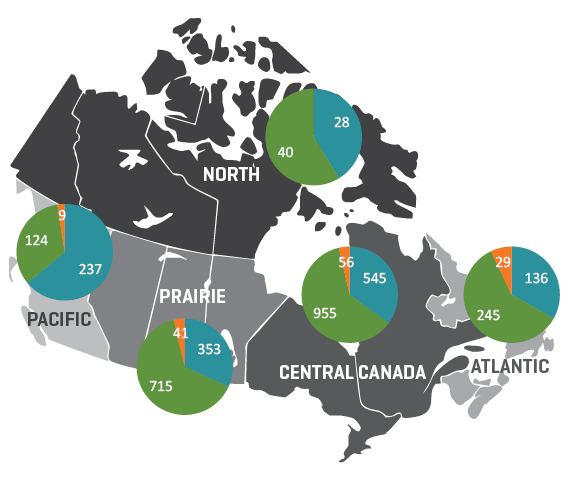
Our website includes up-to-date numbers on the Quarterly Reports page.
RABIES
| Examined | 1,124 |
| Positive | 39 |
WHITE-NOSE SYNDROME
| Examined | 232 |
| Positive | 14 |
AVIAN INFLUENZA VIRUS
| Examined | 1,582 |
| Positive | 88 |
CHRONIC WASTING DISEASE
| Examined | 134 |
| Positive | 12 |
WEST NILE VIRUS
| Examined | 1,564 |
| Positive | 34 |
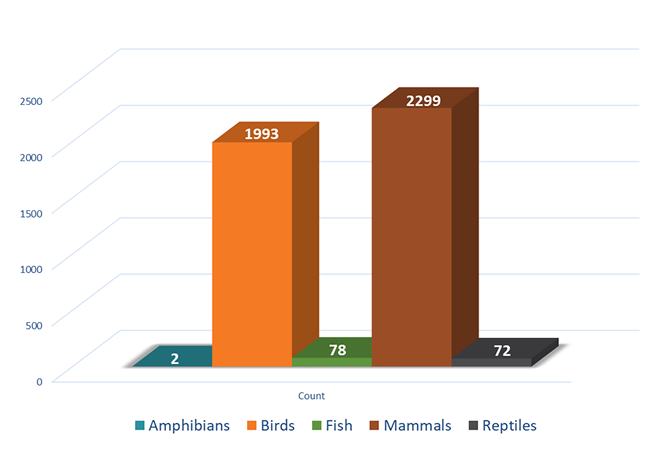
Fig 3: Species distribution for animals processed by the CWHC in 2017.
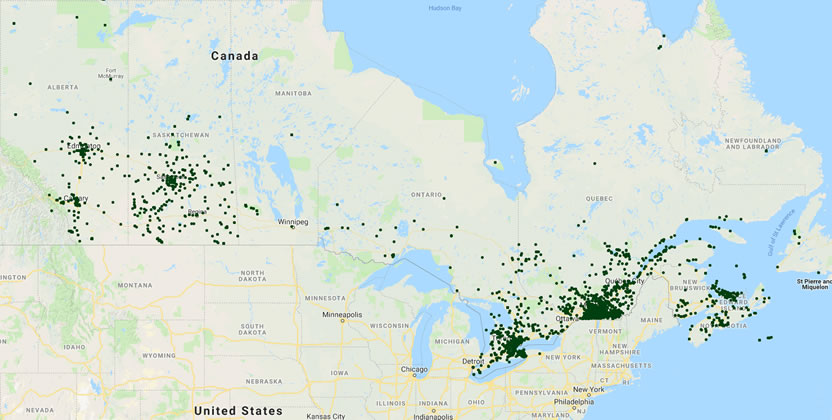
Fig 4: Spatial clustering of CWHC diagnostic submissions: Including only data from regions that report latitude and longitude of submissions.
Note: British Columbia, Yukon, Nunavut and the Northwest Territories data are available but not at the spatial resolution needed for this analysis.
Goal: To build and deploy the technical expertise needed to support current demands and grow special project consultations and projects as part of CWHC core business
Our general scanning surveillance program provides the backbone for many management decisions, but there are cases when more targeted efforts are needed. The CWHC conducts a large number and variety of special projects, from risk assessments to targeted research and surveillance to support partners evidence-based decision making.
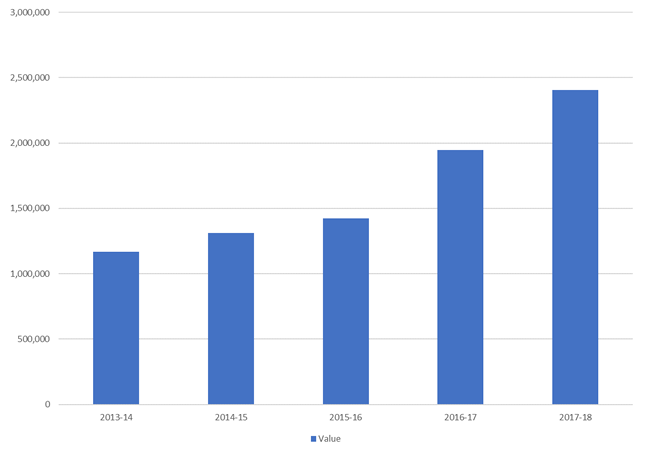
Fig 5: Revenue generated from special projects.
Assessment: In the past 5 years,the number of special projects has increased 65% and the total amount of special project funding has increased from ~1.1 million to over $2.4M annually. This reflects a rising demand for the diversified and specialized wildlife health expertise of the CWHC. Special projects now comprise over 60% of total CWHC cash funding, close to a 20% increase from just 5 years ago. This is partially due to the increased number of projects as well as to the decline in revenue for scanning surveillance, upon which much of the infrastructure on which special projects are reliant is based. Erosion of the core infrastructure from scanning surveillance is increasing the cost of delivery on special topics.
| National Office |     |
| BC |  |
| Alberta |     |
| Western/Northern |   |
| Ontario/Nunavut |  |
| Québec |  |
| Atlantic |        |
The CWHC community of practice continues to grow through the addition of associates and affiliates who have interest enthusiasm and expertise to contribute to a national approach to wildlife health. Close collaborations with the National Wildlife Health Center in the United States and Wildlife Health Australia provide new insights and opportunities to expand CWHC expertise.
The successful launch of our wildlife health intelligence project and its proof-of-concept trial with avian influenza creates new capacity to collect and use information beyond our existing diagnostic and research findings.
Actions: The development of our Wildlife Health Information Platform and new citizen science efforts of our regional centres will be encouraged to increase our ability to incorporate a diversity of data types to provide a more distributed and diverse awareness of issues to improve our ability to anticipate problems over more of Canada. We will trial an epidemiologist position in 2018-19 at the national office to augment capacity to deliver on the growing demand for special topics as well as continue to grow our network of associated and affiliates with whom we can collaborate on an ad hoc basis to supplement special expertise demands.
Goal: To maintain six fully operational regional centres plus a national office to meet current demands and have the financial sustainability to support strategic growth and surge capacity needs on a 5 year planning cycle.
Assessment: CWHC funding remains diversified, ensuring no one partner is burdened with the cost of delivering a national program. Efficiencies and partnerships result in considerable cost savings and low proportions on income to administrative services, leaving most revenue for program delivery. Financial shortcomings preclude delivery on key aspects needed to better anticipate risks. Overall income has grown slightly from last year as have expenses. Ongoing shrinkage of support for core programs is compromising program delivery, particularly in 2 of our regional centres that joined the Cooperative as self-funded nodes. Special topic projects and some reduction in human resources were required to avoid a net financial loss. Costs savings for targeted programs are gained by using the existing operating infrastructure and personnel in place for scanning surveillance programs. Further cost-savings are realized by integrating multiple programs (i.e.) one submission to the CWHC can be examined for multiple objectives. Decreasing resources for the core program may necessitate greater cost-recovery on targeted outputs resulting in increased costs for future services. Two federal partners have established multi-year finding agreements, but the majority of CWHC support is planned and delivered annually, preventing strategic planning.
Actions: The CWHC will work with government partners to implement a fully funded national approach to wildlife health that will gain further efficiencies through partnerships and remedy the steady declines in funding to the CWHC. Attention will be directed to attracting new partners, to revitalize agreements that were terminated by partners, and seek additional special project funds to reduce operational costs. The CWHC continues to reach out to secure new partners or build on existing partnerships, such as with the Department of Fisheries and Oceans, to increase our knowledge and capacity to better meet our surveillance goals.
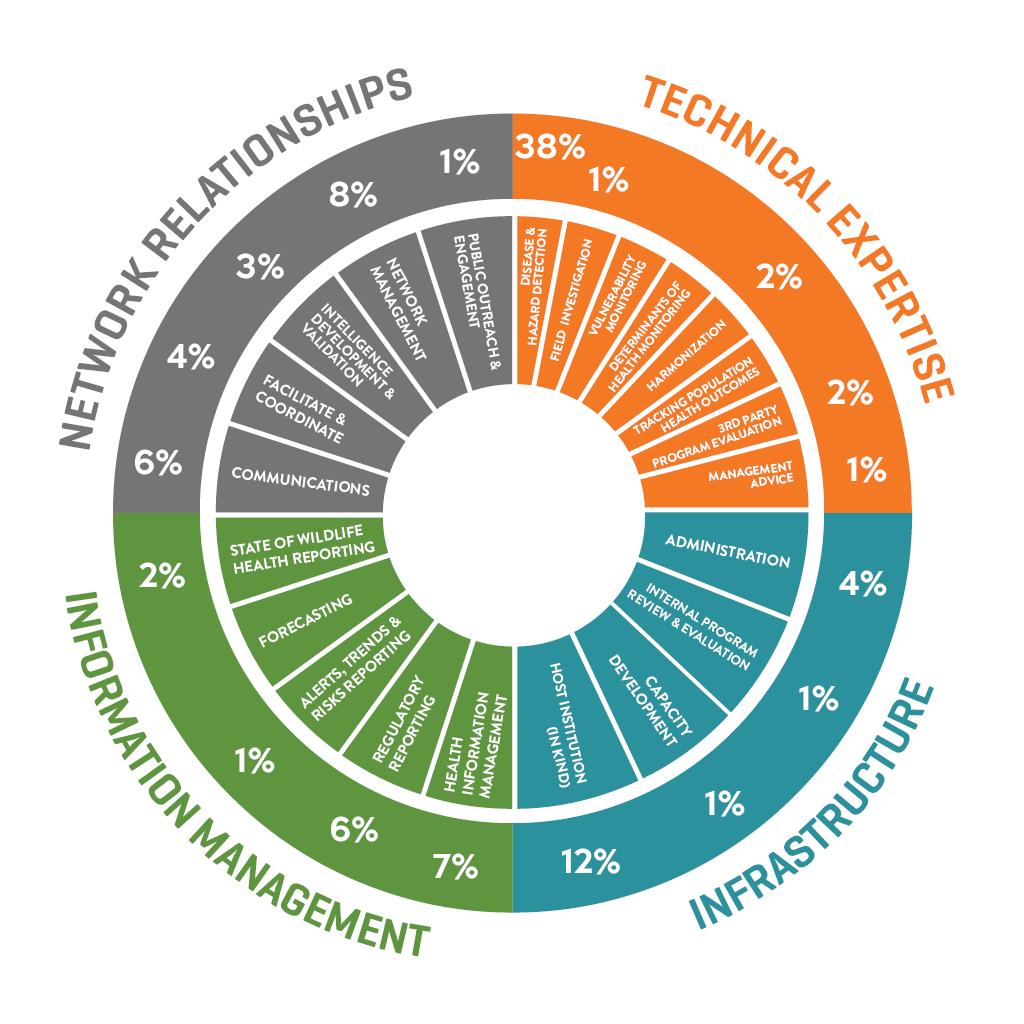
| General | Targeted | Total (Cash) | In-kind | Total cash+in-kind | |
| Agriculture and Agri-Food Canada | 212,410 | 212,410 | 212,410 | ||
| Canadian Food Inspection Agency | 150,000 | 271,280 | 421,280 | 421,280 | |
| Environment Canada | 440,000 | 164,783 | 604,783 | 604,783 | |
| First Nations and Inuit Health Branch | 4,972 | 4,972 | 4,972 | ||
| Fisheries and Oceans | 35,927 | 35,927 | 35,927 | ||
| Parks Canada | 150,000 | 22,100 | 172,100 | 172,100 | |
| Public Health Agency of Canada | 240,000 | 240,000 | 240,000 | ||
| BC Agriculture | 454,214 | 454,214 | 81,156 | 535,370 | |
| BC Environment | 10,000 | 10,000 | 10,000 | ||
| BC First Nations Health Authority | 7,500 | 7,500 | 7,500 | ||
| BC Forests, Lands & Natural Resource Operations | 10,000 | 10,000 | 10,000 | ||
| Genome British Columbia | 222,717 | 222,717 | 222,717 | ||
| Growing Forward 2 | 195,837 | 195,837 | 195,837 | ||
| New Brunswick | 10,259 | 3,500 | 13,759 | 13,759 | |
| Newfoundland & Labrador | 21,700 | 21,700 | 21,700 | ||
| Northwest Territories | 16,000 | 75,000 | 91,000 | 91,000 | |
| Nova Scotia | 9,500 | 9,500 | 9,500 | ||
| Nunavut | 15,000 | 15,000 | 15,000 | ||
| Ontario - Agriculture, Food and Rural Affairs | 71,000 | 71,000 | 71,000 | ||
| Ontario - Health and Long Term Care | 100,000 | 100,000 | 100,000 | ||
| Ontario - Natural Resources | 80,000 | 120,000 | 200,000 | 200,000 | |
| PEI - Environment | 4,735 | 4,735 | 4,735 | ||
| PEI - Health | 2,050 | 2,050 | 2,050 | ||
| MFFP | 105,000 | 75,753 | 180,753 | 180,753 | |
| MAPAQ | 35,000 | 35,000 | 35,000 | ||
| MSSS | 10,000 | 10,000 | 10,000 | ||
| Saskatchewan Agriculture and Food | 72,000 | 72,000 | 72,000 | ||
| Saskatchewan Environment | 41,309 | 242,000 | 283,309 | 283,309 | |
| Yukon | 14,000 | 14,000 | 14,000 | ||
| University of Calgary | 100,370 | 100,370 | |||
| University of Guelph | 211,111 | 211,111 | |||
| University of Montreal | 211,111 | 211,111 | |||
| University of Prince Edward Island | 211,111 | 211,111 | |||
| University of Saskatchewan | 11,000 | 7,200 | 18,200 | 261,000 | 297,400 |
| United States Department of Agriculture | 15,513 | 15,513 | 15,513 | ||
| Canadian Hatching Egg Producers | 2,888 | 2,888 | 2,888 | ||
| Chicken Farmers of Canada | 7,219 | 7,219 | 7,219 | ||
| Turkey Farmers of Canada | 4,331 | 4,331 | 4,331 | ||
| Miscellaneous Income/Fee-for-service | 110,725 | 110,725 | 110,725 | ||
| TOTAL REVENUE | $ 1,468,475 | $ 2,405,947 | $ 3,874,422 | $ 1,075,489 | $ 4,949,911 |
| General | Targeted | Total (Cash) | In-kind | Total cash+in-kind | |
| Salaries and Benefits | 1,022,349 | 948,971 | 1,971,321 | 420,000 | 2,391,321 |
| Equipment | 12,918 | 135,016 | 147,934 | 300,000 | 447,934 |
| Diagnostic Costs | 193,249 | 526,941 | 720,190 | 56,299 | 776,489 |
| Operations | 67,713 | 152,937 | 220,650 | 220,650 | |
| Travel | 42,375 | 51,607 | 93,982 | 93,982 | |
| Other | 50,581 | 258,962 | 309,543 | 299,190 | 608,733 |
| Overhead | 194,375 | 125,136 | 319,511 | 319,511 | |
| TOTAL EXPENSES | $ 1,538,561 | $ 2,199,570 | $ 3,783,131 | $ 1,075,489 | $ 4,858,620 |
| REVENUE LESS EXPENSES | $ (115,086) | $ 206,377 | $ 91,291 | $ 0 | $ 91,291 |
Craig Stephen - Chief Executive Officer
Patrick Zimmer - Chief Operating Officer
Kevin Brown - Information Services Manager
Bevan Federko - Programmer/Analyst
Chintan Mehta - Programmer/Analyst
Dale Jefferson - Data and Communications Officer
Nadine Kozakevich - Accountant (WCVM)
Nataliya Morgun - Financial Assistant (WCVM)
Jane Parmley - Epidemiologist (Ontario/Nunavut)
Jordi Segers - National White-Nose Syndrome Coordinator (Atlantic)
Associates
Colin Robertson - Wilfred Laurier University
Todd Shury - Parks Canada
Brett Elkin - Government of Northwest Territories
Gordon Stenhouse - Foothills Research Institute Grizzly Bear Research Program
Hein Snyman - Co-Regional Director, Diagnostic Pathologist
Helen Schwantje - Co-Regional Director, Provincial Wildlife Veterinarian
Chelsea Himsworth - Co-Regional Director, Diagnostic Pathologist (on maternity leave)
Cait Nelson - Assistant Regional Director, Provincial Wildlife Health Biologist (on maternity leave)
Shari Wilmot - Provincial Wildlife Health Biologist
Vicki Bowes - Avian Pathologist
Tony Redford - Avian Pathologist
Ann Britton - Mammalian Pathologist
Glenna McGregor - Mammalian Pathologist
Steven Raverty - Mammalian Pathologist
Erin Zabek - Bacteriologist
Tomy Joseph - Virologist
Michael Pawlik - Fish Pathologist
Dory Kirkbright - Fish Pathologist
Laura Baseler - Fish Pathology Post-Doctoral Fellow
Nancy Dewith - Epidemiologist
Brian Radke - Public Health Veterinarian
Jane Pritchard - Lab Director and Chief Veterinary Officer
Susan Kutz - Regional Director
Samuel Sharpe - Wildlife Pathologist
Collin Letain - Coordinating Wildlife Health Technician
Associates
Dr. Judit Smits - University of Calgary Faculty of Veterinary Medicine
Dr. Nigel Caulkett - University of Calgary Faculty of Veterinary Medicine
Dr. Owen Slater - University of Calgary Faculty of Veterinary Medicine
Dr. Susan Cork - University of Calgary Faculty of Veterinary Medicine
Dr. Jamie Rothenburger - University of Calgary Faculty of Veterinary Medicine
Trent Bollinger - Regional Director
Lorraine Bryan - Pathologist
Marnie Zimmer - Wildlife Biologist
Associates
Heather Fenton - Government of the Northwest Territories Department of Environment and Natural Resources
Affiliates
Emily Jenkins - Western College of Veterinary Medicine
Claire Jardine - Regional Director
Doug Campbell - Veterinary Pathologist
Lenny Shirose - Biologist
David Cristo - Communications and Projects Coordinator
Laura Dougherty - Wildlife technician
Associates
Ian Barker - University of Guelph Ontario Veterinary College
Stéphane Lair - Regional Director
Kathleen Brown - Laboratory Technician
Judith Viau - Animal Health Technologist
Viviane Casaubon - Wildlife Health Technician
Claire Grosset
Affiliates
Émilie L. Couture – Granby Zoo
Pierre-Yves Daoust - Regional Director (April-December 2017)
Megan Jones - Regional Director (February-March 2018)
Laura Bourque - Veterinary Pathologist
Jordi Segers - National White Nose Syndrome Coordinator
Darlene Weeks - Wildlife Technician
Fiep de Bie - Wildlife Technician
Tessa McBurney - Atlantic Bat Conservation Project Technician
Associates
Scott McBurney - Atlantic Veterinary College
Ted Leighton - Western College of Veterinary Medicine
Gary Conboy - Atlantic Veterinary College
Spencer Greenwood - Atlantic Veterinary College
David Overy -
Atlantic Veterinary College
María Forzán – Atlantic Veterinary College
Raphaël Vanderstichel, Atlantic Veterinary College

Parks Canada
Environment and Climate Change Canada
Canadian Food Inspection Agency
Public Health Agency of Canada
To promote and protect the health of wildlife and Canadians through leadership, partnership, investigation, and action
A world that is safe and sustainable for wildlife and society